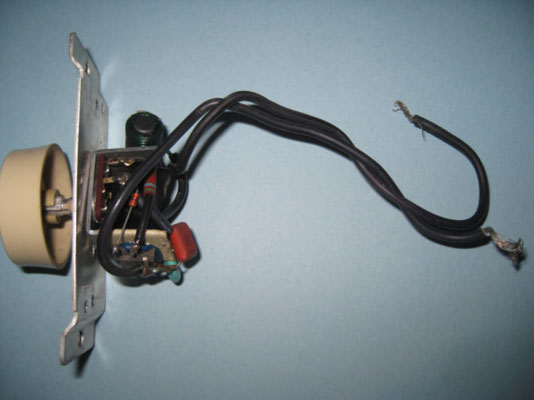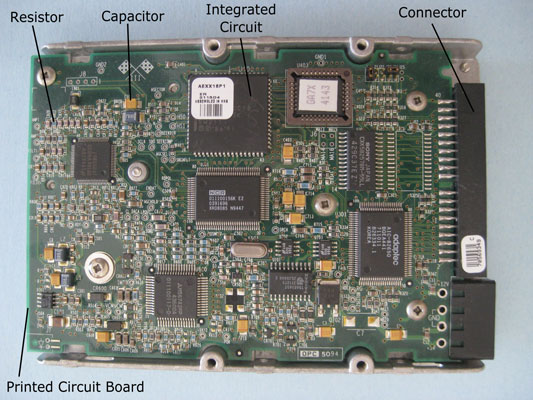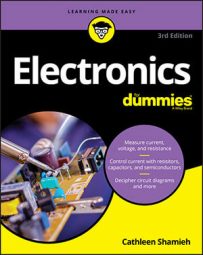Circuits in electronics usually don't look as neat and geometric as you might expect. The shape of a circuit is usually not important for its operation. What matters about any circuit — and what you should concern yourself with when building one — is how the components are connected, because the connections show you the path the current takes through the circuit.
The shape of a circuit does matter for circuits involving high-frequency signals, such as radio-frequency (RF) and microwave circuits. The layout, or placement of circuit components, must be designed with care to reduce noise and other undesired AC signals. Additionally, the proximity of bypass capacitors to other circuit components can make a difference in the performance of many circuits.
The figure is a photograph of a 1980's style dimmer switch circuit. This simple electronic device uses just a few components to control current flow to a built-in light fixture in a house. But most electronic systems are a lot more complicated than this; they connect lots of individual components in one or more circuits to achieve their ultimate goal.

The next figure gives you an inside view of the circuitry of a computer hard drive. The circuit consists of the following, all attached to a specialized surface known as a printed circuit board, or PCB:
Many discrete components (individual parts, such as resistors and capacitors)
An assortment of integrated circuits, or ICs (which look like electronic centipedes)
Connectors (which, not surprisingly, connect the hard drive electronics to the rest of the computer).
 Computer hard drive electronics.
Computer hard drive electronics.
ICs are nothing more than a bunch of tiny circuits that work together to perform a function so commonly desired that it's worthwhile to mass-produce the circuit and package it in a protective case with leads (the centipede legs) that enable access to the circuit inside.
After you discover how different types of components control current flow in circuits and can apply voltage and current laws, you can begin to design and construct useful electronic circuits.

